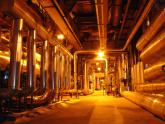Nuclear Folks Offer Solutions
Centrifuge Project May Get Key Funding
Ken Silverstein | Mar 01, 2011

The nuclear folks say they have answers to global energy woes. And they are positioned to provide them now that regulators may finance a key project.
It centers on the so-called American Centrifuge technology, which requires 95 percent less electric power to produce low-enriched uranium when compared to current alternatives, or gaseous diffusion technology. The developer of the tools, USEC, a former federal agency that is now a private enterprise, says that this will reduce both production costs and the exposure to price volatility.
The goal here is to invest in those advanced technologies to meet the nation’s long-term energy needs and to provide a reliable power source, says Maryland-based USEC. The current demand for uranium is met by accessing mines, using utility inventories and through new fuel efficiencies that make plants more productive. It’s also met by decommissioning nuclear weapons.
But the International Atomic Energy Agency is predicting as many as 100 new reactors in 20 years. That will cause the demand for uranium to rise 200 million pounds to 240 million pounds, annually. So, USEC has long argued that the United States must rebuild and expand its domestic fuel cycle infrastructure.
“USEC made substantial progress in 2010 to address the U.S. Department of Energy’s technical and financial concerns,” says John Welch, Chief Executive of USEC. “This had a very positive effect of eliminating or mitigating project risks .. The technology is ready to deploy commercially.”
USEC has invested $1.95 billion of its own funds. The Energy Department may pony up another $2 billion for a project purported to generate 8,000 jobs in 10 states. Meanwhile USEC says it has gotten “strategic investment” from Babcock & Wilcox and Toshiba Corp., which is also helping the U.S. nuclear developer to win an additional $1 billion in funding from Japanese export credit agencies.
Satisfying Concerns
Now that USEC has gotten a “conditional commitment” from the Energy Department, it says that it is working with the agency to satisfy any technical or financial concerns it might have. To get this loan guarantee, USEC must demonstrate that it has sufficient capital to complete the project.
“We believe that the American Centrifuge Plant is vital to supporting the long-term growth of nuclear power in the United States,” says Robert Cochran, president of Babcock & Wilcox Technical Services Group. “Our decision to partner with USEC in a manufacturing joint venture speaks to the long-term value we see in the project.”
Altogether, the Obama administration is awarding $4 billion in loan guarantees for uranium enrichment projects. That’s double from what was initially planned in the 2005 Energy Act. And, it is separate from the $54 billion in loan guarantees that is expected to go toward the development of futuristic nuclear plants.
Uranium, of course, is the fuel used to run nuclear power plants. The centrifuge technology has been long used by European facilities but it is fairly uncommon in the United States. Here, the efforts are focused on advancing older and more energy intensive models -- all to accommodate two decades of underinvestment in uranium mining and enrichment.
Much of the uranium used in this country is now mined in Australia, Canada and Namibia while small amounts are derived in the western United States. But at least those foreign sources are expected to get fully tapped by such nations as China, India and Russia that are in the midst of expanding their nuclear programs. If this country does the same and it wants to avoid shortages and price spikes, then it must develop its own resources.
USEC does say that if it is able to win such a loan, then it would be able to nearly double its enrichment facility from 3.8 million "work units" to 7 million. The Energy Department has said that it “sees promise” in the centrifuge technology and therefore has agreed to invest in it -- provided that all of its financial and technical questions are properly addressed.
The overall objective is to free-up domestic energy resources so that the the country can exercise more independence. It is also to help lessen the nation’s reliance on fossil fuels by offering what nuclear advocates say is a cleaner alternative. By encouraging the production of domestic uranium, they are saying the United States can achieve both of those goals.
Copyright © 1996-2010 by CyberTech, Inc. All rights reserved.
To subscribe or visit go to: http://www.energycentral.com
To subscribe or visit go to: http://www.energybiz.com